An object kept near a convex lens of focal length f, executes SHM between P and Q according to the equation y=Asinωt, O being the mean position. Take x-axis as the principal axis of the lens and A<<D to answer the following questions:
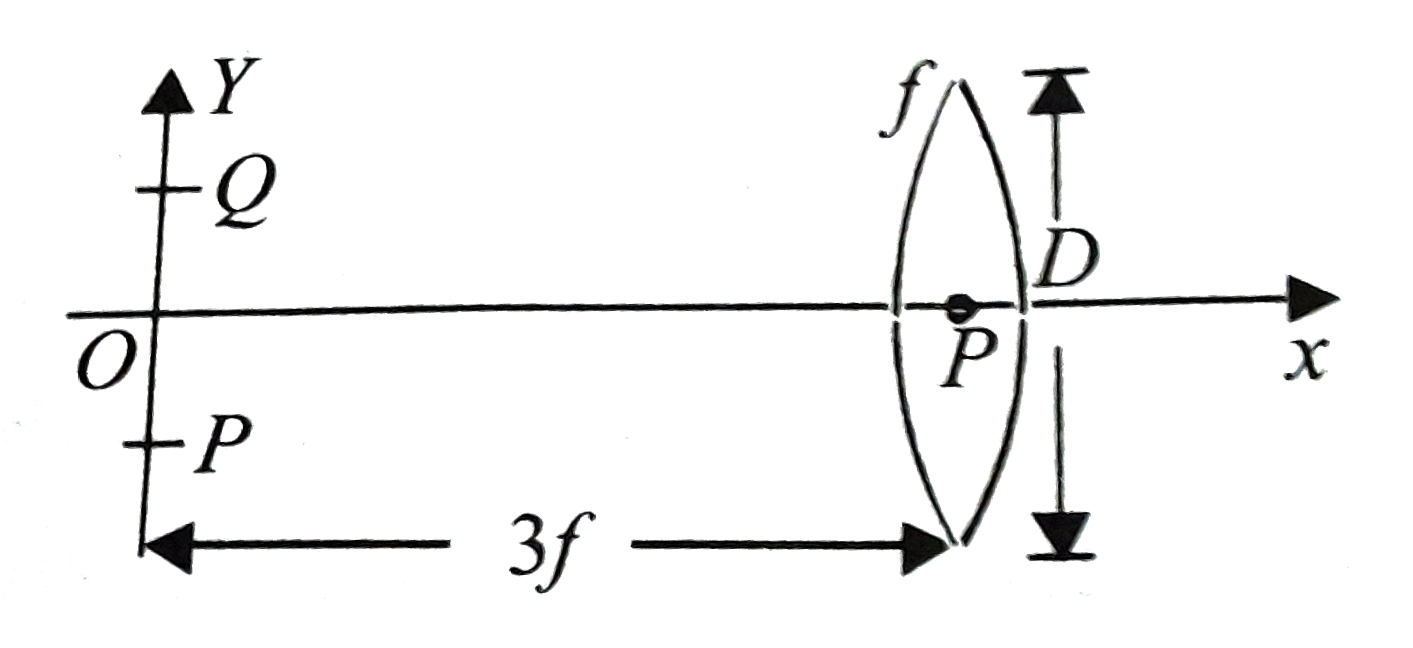
Q. The amplitude of oscillation of the image is
A
2A
A/2
Image does not oscillate
The correct Answer is:c
1v−1−3f=1f⇒1v=1f−13f⇒v=3f2
y1y=v3f⇒y1=yv3f=y2
If ymax=A then y1max=A1=A/2
Max velocity =ωA1=ωA/2
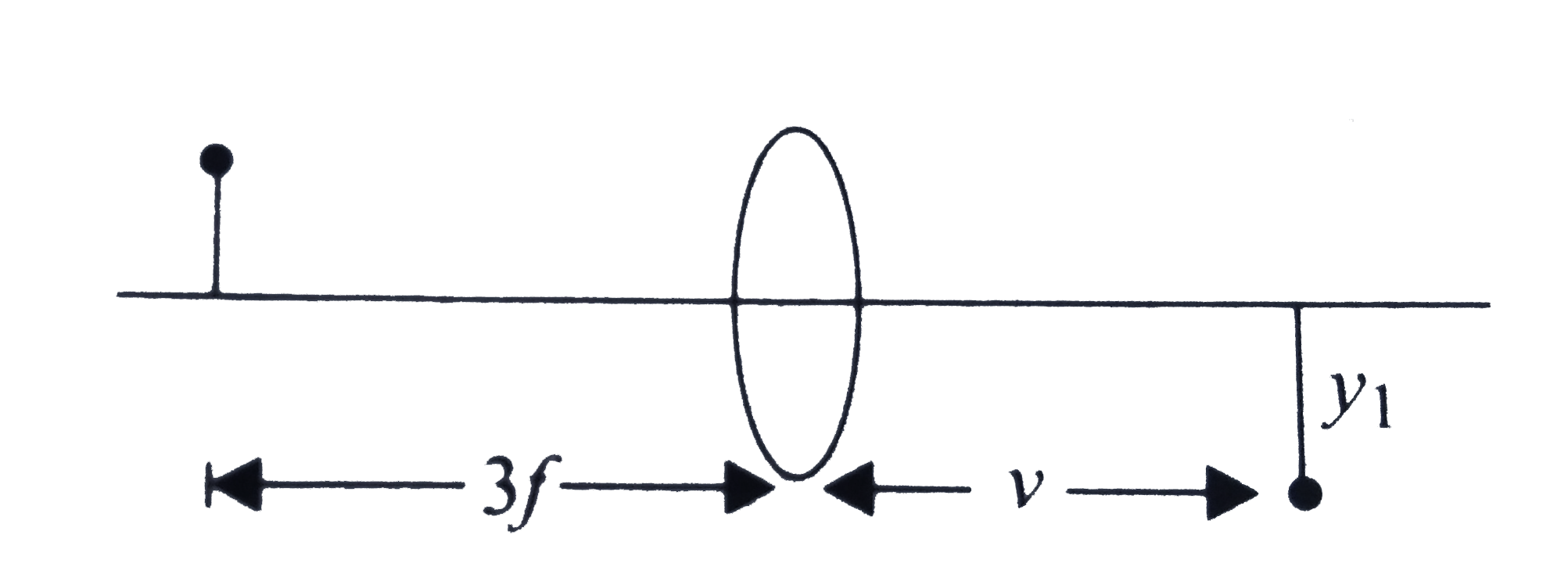
Topper's Solved these Questions
- BOOK - CENGAGE PHYSICSCHAPTER - GEOMETRICAL OPTICSEXERCISE - Integer15videos
GEOMETRICAL OPTICS
- BOOK - CENGAGE PHYSICSCHAPTER - GEOMETRICAL OPTICSEXERCISE - Archives7videos
GEOMETRICAL OPTICS
- BOOK - CENGAGE PHYSICSCHAPTER - GEOMETRICAL OPTICSEXERCISE - Assertion-Reasoninig2videos
GEOMETRICAL OPTICS
- BOOK - CENGAGE PHYSICSCHAPTER - FRICTIONEXERCISE - QUESTION BANK1videos
FRICTION
- BOOK - CENGAGE PHYSICSCHAPTER - GRAVITATIONEXERCISE - Question Bank39videos
GRAVITATION
Similar Questions
A 5 cm tall object is placed on the principal axis of convex lens of focal length 50 cm at a distance of 40 cm from it. Find the nature, position and size of the image.
View SolutionIn YDSE set up (see fig.), the light sources executes SHM between P and Q according to the equation x=Asinωt, S being the mean position. Assume d→0 and A<<L. ω is small enough to neglect Doppler effect. If the sources were stationary at S, intenstiy at O would be I0
Read the paragraph carefully and answer the following questions.
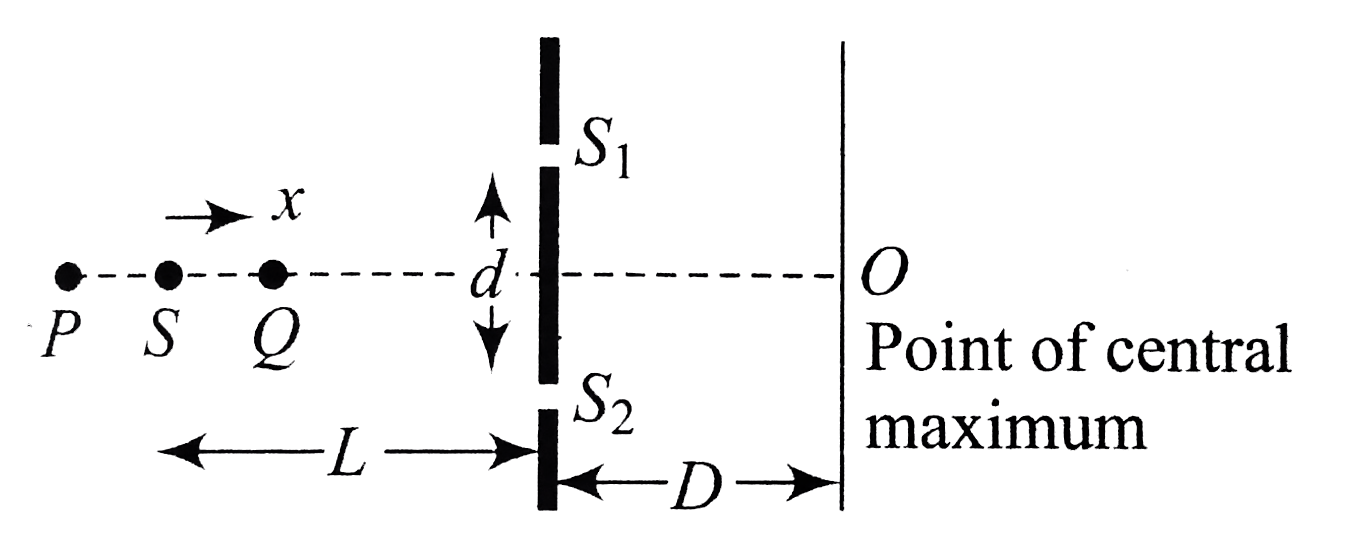
The fractional change in intensity of the central maximum as function of time isView Solution
Knowledge Check
- Question 1 - Select One
An object kept near a convex lens of focal length f, executes SHM between P and Q according to the equation y=Asinωt, O being the mean position. Take x-axis as the principal axis of the lens and A<<D to answer the following questions:
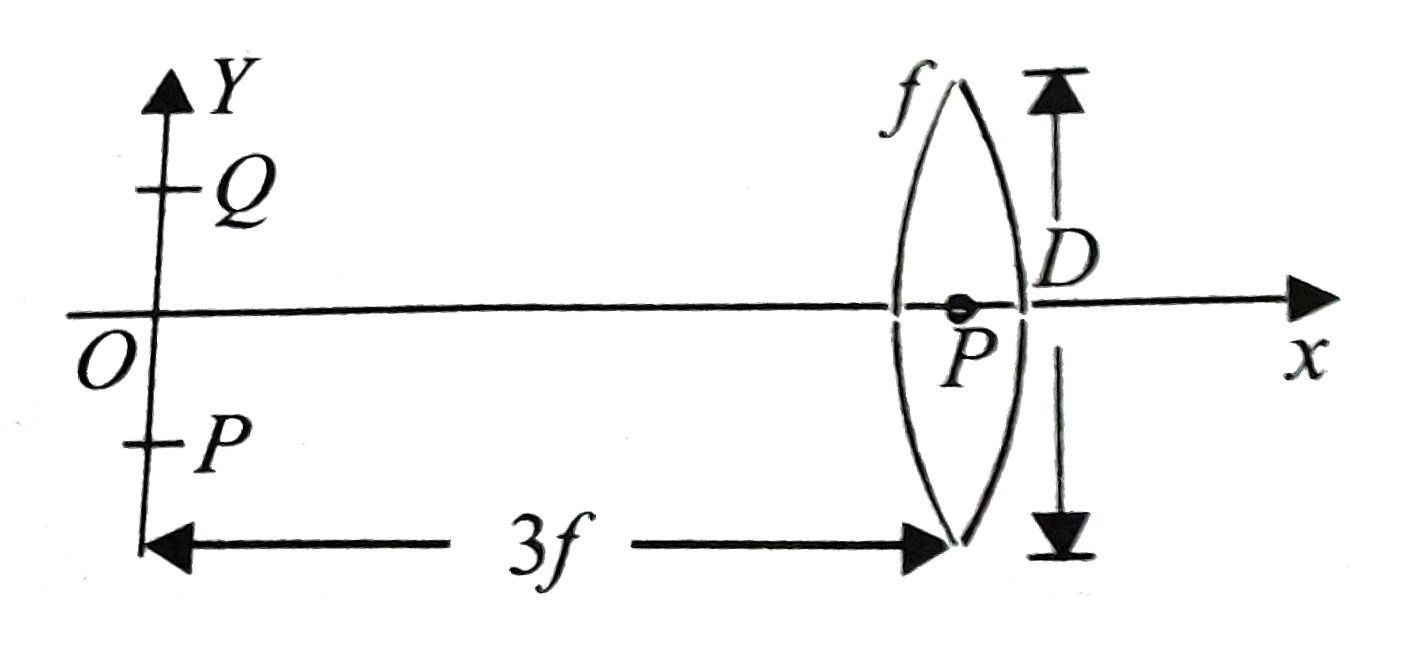
Q. The velocity of the image when the object crosses the mean position and goes toward Q isAAωB−AωCAω/2DNone of these - Question 2 - Select One
An object kept near a convex lens of focal length f, executes SHM between P and Q according to the equation y=Asinωt, O being the mean position. Take x-axis as the principal axis of the lens and A<<D to answer the following questions:
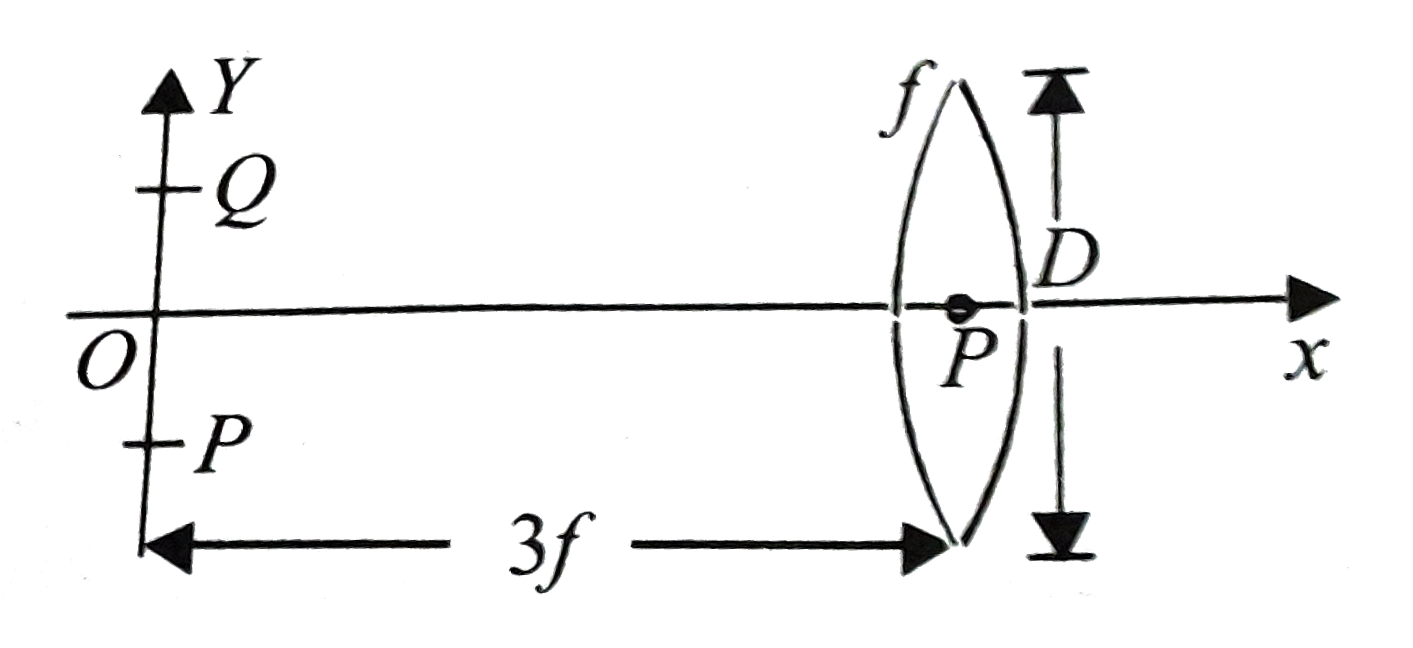
Q. The phase difference between the object and the image oscillations isAπ/2BπC0DNone of these - Question 3 - Select One
In YDSE set up (see fig.), the light sources executes SHM between P and Q according to the equation x=Asinωt, S being the mean position. Assume d→0 and A<<L. ω is small enough to neglect Doppler effect. If the sources were stationary at S, intenstiy at O would be I0
Read the paragraph carefully and answer the following questions.
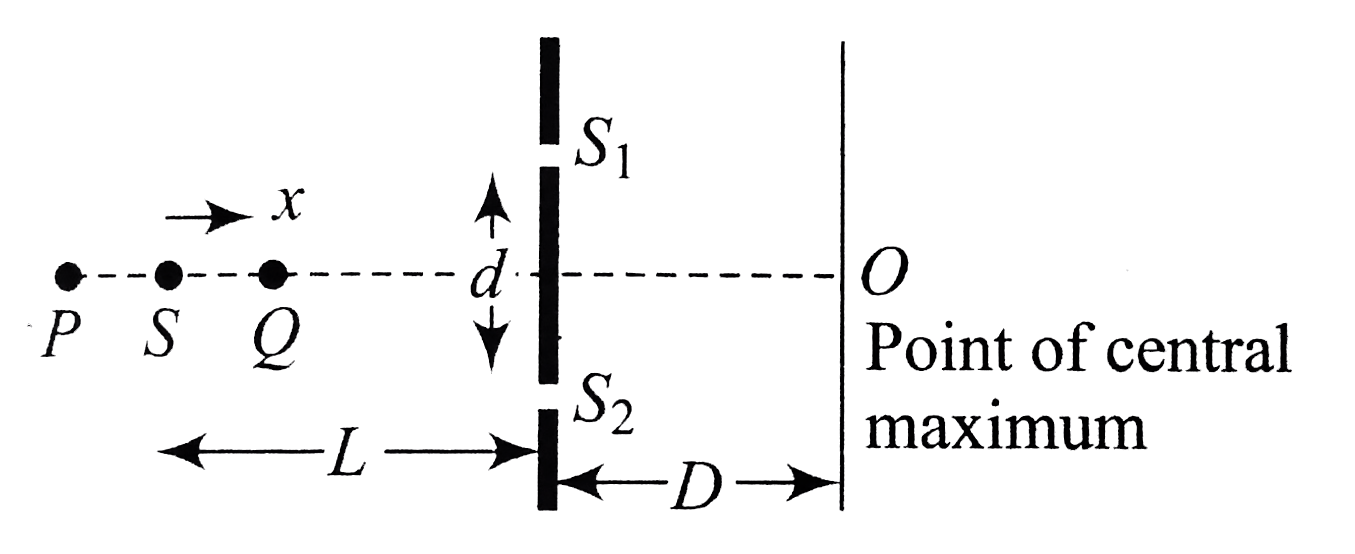
When the source comes toward the point Q,Athe bright fringe will be less bright.Bthe dark fringe will no longer remain darkCthe fringe width will increaseDnone of these
In YDSE set up (see fig.), the light sources executes SHM between P and Q according to the equation x=Asinωt, S being the mean position. Assume d→0 and A<<L. ω is small enough to neglect Doppler effect. If the sources were stationary at S, intenstiy at O would be I0
Read the paragraph carefully and answer the following questions.
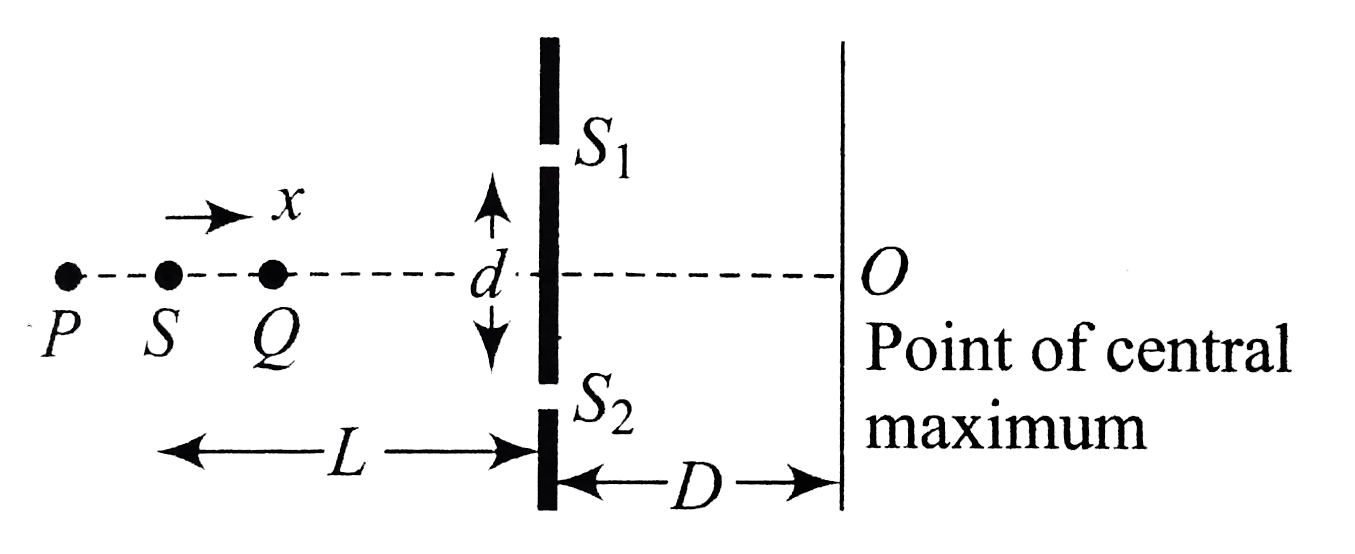
The fringe width β can be expressed asView SolutionA point object O is placed on the principal axis of a convex lens of focal length f=20cm at a distance of 40 cm to the left of it. The diameter of the lens is 10. An eye is placed 60 cm to right of the lens and a distance h below the principal axis. The maximum value of h to see the image is
View SolutionA thin linear object of size 1mm is kept along the principal axis of a convex lens of focal length 10cm. The object is at 15cm from the lens. The length of the image is:
View SolutionA point object is placed on the optic axis of a convex lens of focal length f at a distance of 2f to the left of it. the diameter of the lens is 'd' . An eye is placed at a distance of 3f to the right of the lens and a distance h below the optic axis. The maximum value of h to see the image is
View SolutionA convex lens of focal length f and a plane mirror are y distance apart. An object O is kept on the principal axis of the lens at a distance x from the lens. The values of x and y for the final image of O to fall exactly (position and size) on the object O are :
 View Solution
View Solution

